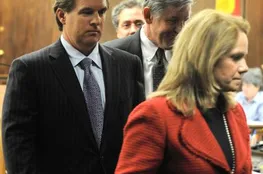Nvidia Corp. NVDA shares fell about 14% in the week ended Sept. 6 amid macro concerns. On Friday, portfolio manager and founder of Niles Investment Management Dan Niles weighed in on what’s in store for the artificial intelligence stalwart as well as the technology sector per se in the near and medium term. The weaker sentiment toward technology stocks is due to the fact that it is becoming clearer for investors that companies are spending a lot of money on AI, and even as the spending on AI climbs, revenue forecasts are going down, said Niles in an interview with CNBC. The quarterly reports from the three biggest hyperscalers – Alphabet, Inc. GOOG GOOGL, Microsoft Corp. MSFT, and Amazon, Inc. AMZN – showed each of them increased their spending on AI infrastructure, he noted.
“So at a certain point, you are spending a lot of money but you will want to see a return,” he added.
To make his case, Niles noted that post COVID-19, Nvidia’s revenue growth surged to 80% year-over-year and then there was a slowdown when demand started to wane. These three big hyperscalers also began to reduce their spending, causing Nvidia’s revenue growth to turn negative to -20%, and the stock plummeted 66% through the adjustment phase, he said. AI spending is progressing much faster than what was seen during the Internet infrastructure build-out, Nile said. This is evident from Nvidia’s revenues rising fivefold since the launch of ChatGPT, he pointed out.
Much like the period post-COVID, the big internet companies that were heavily investing in infrastructure are now seeing their future projections decrease, he added. Niles believes there is still substantial potential for technology spending. 'You have a phase you have to go through. I firmly believe in the next several years that Nvidia’s revenues will double from current levels and the stock will be able to double as well,' he stated. When considering areas outside the tech sector to invest in, Niles said it might be time for consumer staples, utilities, and telecom services to shine when the Federal Reserve begins to cut rates.
He noted that since July 16 when the S&P 500 peaked, it is down about 5%, but the equal-weighted S&P 500 is down only around 70 basis points. This compares to the Magnificent Seven's decline of roughly 11%, he observed. 'So, I think investors need to think where is the wind at my sails,' Niles advised. The portfolio manager believes rate cuts are imminent, with the only uncertainty being the number of cuts that will occur between now and the end of the year, with more expected next year.
Niles also mentioned that he does not foresee a recession, given that job openings exceed the number of people seeking employment. 'In a services-led economy, it’s hard to imagine ending up in a recession under these conditions,' he concluded.
























